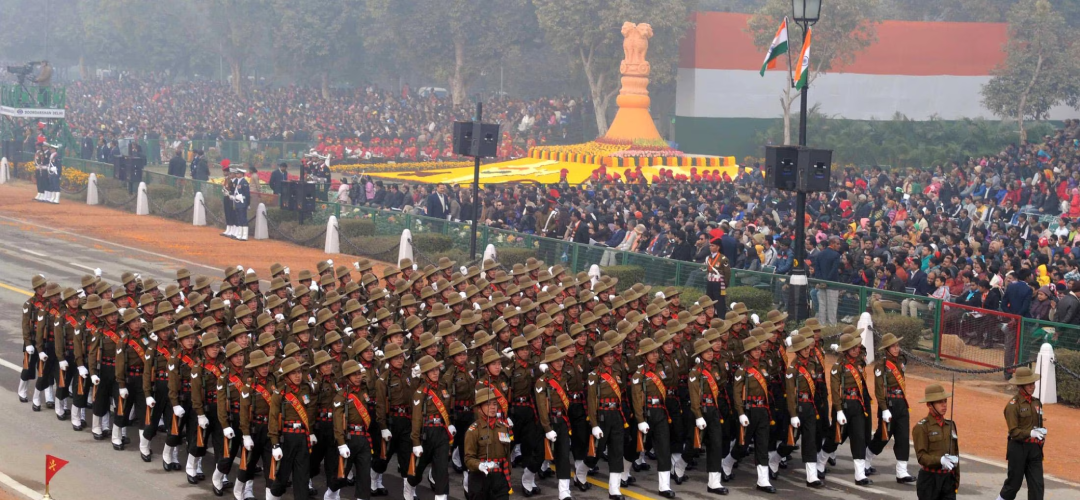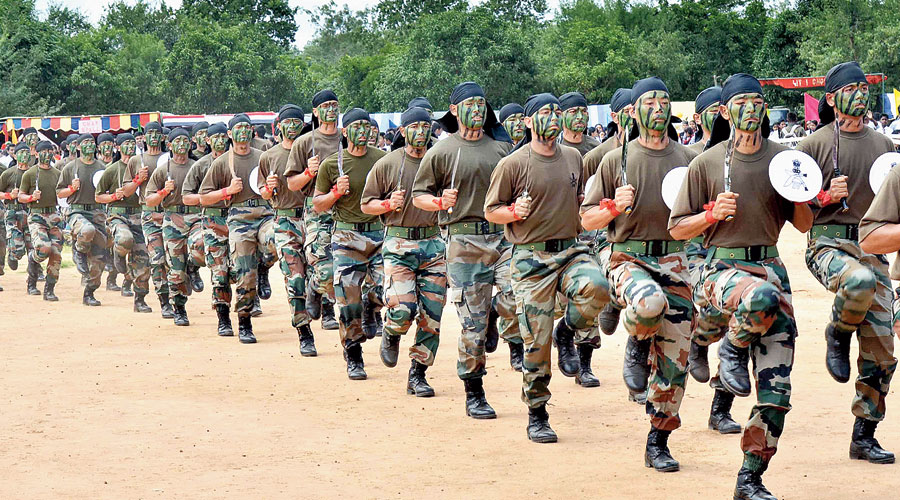Seeking Fresh Pastures!
December 16, 2023 | Expert Insights

Faced with a debilitating shortage of human resources to man its military machine after the unexpected dragging of the 'special military operation' into its second year, Russia has been recruiting soldiers from around the world; however, what drew considerable attention amidst security circles in India were reports of a number of causalities of Russian soldiers of Nepalese origin in the recent surge in fighting.
There was a strong public backlash in Nepal, and the Nepali government claimed it was in the dark as to how their citizens had wormed their way into the ranks of the mighty Russian Army. Labelling it as illegal, it has officially asked the Russian government to stop recruiting its citizens.
As per media reports, another country that may have taken inspiration from this Russian enterprise is our northern neighbour, China. Having been caught in a high-altitude faceoff with the well-acclimatised Indian Army in the lofty Himalayan plateau of Northern Ladakh, reportedly, the PLA is facing challenges in manning its high-altitude outposts for around the year deployment. Allegedly, it seeks to recruit Nepalese citizens naturally adapted to high altitudes. For the Indian Army, manning high-altitude borders, including the super high-altitude climes of the Siachen, around the clock is a skill that has been honed over decades and has now become routine.
However, India enjoys a special and long-established relationship with Nepal, and its doughty Gurkha warriors who have participated in all wars of independent India, and, therefore, these developments could be concerning.
Background
As per details available on the internet, currently, 39 battalions are serving in seven Gorkha regiments in the Indian Army. Six regiments were transferred from the British Indian Army at independence, while one was formed later.
Gorkha's recruitment into the British Indian Army goes back to the 1814-16 war between Nepal and British India. While the British won the war, the performance of Gorkha soldiers was impressive, and immediately, the East India Company recruited four Gurkha battalions into the British Indian Army. From this core, the present-day Gorkha Regiments in the Indian Army and the British Army evolved. Nepalese Gorkhas have served in the Indian Army under the Tripartite Agreement or the Gorkha Troops (Agreement) since it was signed in December 1947 – a deal in which India, Britain and Nepal agreed to “continue the employment of (Nepalese) Gurkha (Gorkha) officers and soldiers in the Armies of the United Kingdom and India”.
Of course, in the case of India, the percentage of Nepalese Gorkhas has been diminishing over the years, with many Indian Army Gorkha units having the majority of Indian-domiciled Gorkhas in their ranks. The recruitment of Gorkhas into the Indian Army has been on hold for the last three years, first due to the COVID-19 pandemic and now by the uncertainty caused in Nepal by the implementation of the Agnipath Scheme by the Indian Army.
Stoppage of recruitment of its citizens into the Indian Army has a socio-economic impact on Nepal. Under the Agnipath Scheme, the service is limited to four years, and after that, there is a golden handshake but no pensionary or medical care benefits- it is a clean break. The salaries and pensions of the serving and retired service members significantly contribute to Nepal's economy. Getting recruited into the Indian Army is a big attraction to Nepalese youth, starved of employment opportunities in their own country.

Analysis
With no solution in sight to the impasse, even after the visit of Mr. Pushpa Kamal Dahal 'Prachanda' earlier this year to India, there is a palpable concern in Nepal for an early resolution.
However, Army recruitment is a larger issue for India, and exceptions for one segment of recruits will open the Agnipath system for litigations by domestic interest groups. Hence, New Delhi is unlikely to relent on this account. In any case, apart from the emotional connection between the Indian Army and its Gurkha servicemen, serving and retired, India has no shortage of youth to fill its military ranks, unlike Russia, nor does it need special recruits to man its high-altitude frontiers like the PLA, whose soldiers are the products of a single child family society.
Apparently, to exert pressure on India, a section of Nepalese politicians have been calling for 'defence ties with China' to create parity. The Nepalese Army conducted a joint exercise with the PLA in 2017 for the first time, but it has been on hold since then.
This is understandable from Nepal’s perspective as the basic policy of the Nepali government throughout its history has been one of balancing. This balancing has been mainly between the powers to its north and south. Through this balancing act, Nepal has maintained its sovereignty as an independent country not consumed by the great powers.
India is painfully aware of the tremendous strides that China has made in making inroads into the economic and political fabric of Nepal. Only a few years back, the Chinese ambassador in Kathmandu was openly calling the shots on domestic issues.
The Nepali Communists have had an ambivalent relationship with the Chinese Communist Party. The ideology of the Nepali Communists was Maoism, the official ideology in China before the era of economic reforms. Thus, there is a very tenuous connection between Chinese and Nepali Communists on an ideological level. But for China, ideology is always secondary to its national interests.
During the civil war in Nepal, China did not support its supposedly natural allies, the Nepali Communists. Instead, it backed the monarchy and the more conservative Nepali Congress. The Chinese still have distrust towards radical Maoism. This is because they have themselves suffered under such an ideology in the past.
Now, with news reports coming in that China is exploring the possibility of recruiting soldiers from Nepal, India would be concerned as it could be detrimental to Indian interests. However, there is very little India can do about it, as Nepalese citizens have the right to join any army, including the PLA or the Russian if legally permitted by their government. How this will impact Indo-Nepal relations in the long run is another matter.
Anti-Indian sentiments are at a high in Nepal. Both the Nepali people and the government feel that India has never given them the attention that they deserve. The worldview of the Nepali Communists is, by its very nature, anti-India. They are very happy to further promote the idea that Nepal stands to gain by getting closer to China, including offering its citizens to serve with the PLA.
Therefore, what India must do here is change the narrative and take the focus away from the recruitment of Nepalese citizens into the Indian Army. The Nepali government and people do not necessarily want to be under the thumb of India, but they look forward to riding the Indian growth story. New Delhi must stretch out a helping hand to them. As Mr. Minendra Rijal, Former Defence Minister of Nepal, says, “In sum, no other country can replace India as far as Nepal is concerned.”
India has been the largest foreign aid provider for Nepal and an important development partner of Nepal. India's assistance in the aftermath of the 2015 earthquake and the COVID-19 pandemic remains crucial for Nepal to navigate difficult times. The Nepal-India Economic Cooperation Development Partnership has gained momentum in recent years, particularly in infrastructure development, cross-border connectivity, power generation and trade. Nepal- India cooperation in air, road and railways connectivity, cross-border petroleum products pipeline, hydropower and transmission lines development, integrated check posts and human resource development help remain significant. This is the direction for the relationship to grow.
Assessment
- Nepal falls within China’s larger strategic calculations insofar as India is concerned. India is aware of this expanding footprint and should take mitigating action to retain its influence.
- Seeking solutions through open talk, addressing each other's concerns, and diplomatic assistance to guarantee peace, security and development in the region as a whole should be the key to resolving any outstanding issue.
- Nepal and India's past, present and future are connected. The friendship and collaboration should be further strengthened for shared progress and prosperity. However, this can be done by means other than throwing open recruitment into the Indian Army for Nepalese citizens.








Comments